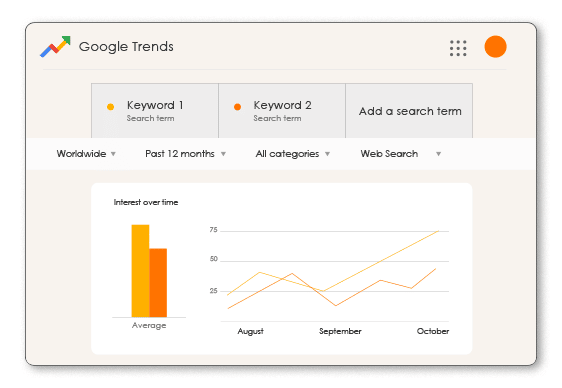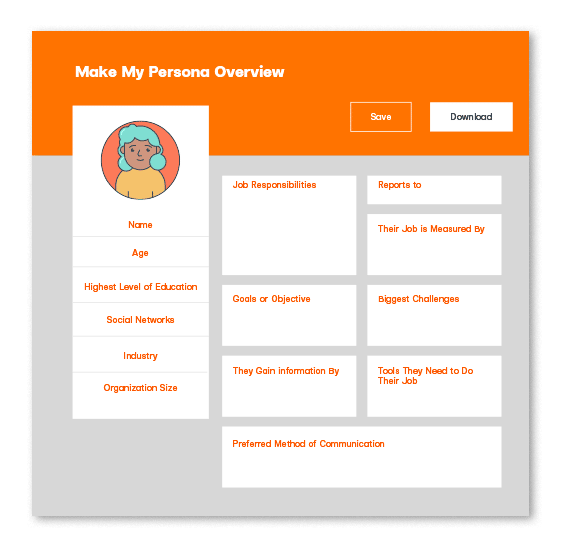
Top Rated Blogging Tools. Do you want to grow your audience, write well, and communicate with customers? If so, this post is for you!
Running a blog isn’t as simple as you think. A blog post takes time to write. There are also things like social media promotion, keyword research, and content development to think about.
Blogging Tools
Blog tools come into their own when they are used for this kind of thing. As a result, you will be able to manage your content schedule and spread information on social media more effectively.
So, let’s get started with the blogging tools that will save you time right now.
According to the expert, the most difficult thing for bloggers is having enough time to write and promote their content.
They may just need better tools if they are a blogger who doesn’t have enough time to do all of the things on their to-do list.
Blogging tools help you run more smoothly, get more readers and clients, and write better content.
It takes a lot of time to write content that isn’t seen by search engines or shared on social media if there aren’t any time-saving blogging tools like these to help.
Blogging is first and foremost a hobby, but it also takes a lot of time and effort. Those who have the blogging bug are in it to win it. That means you’re always trying to come up with new, high-quality content and get more people to read your blog.
A good outlet needs more than just writing skills. You quickly learn that even if you’re a natural-born blogger, you can learn more about search engines and how to make your blog look good.
The good news is that there are free online guides on how to start a blog. They are meant to help writers of all skill levels, from novices to experts. People who use these tools will save a lot of time and effort. Focus on writing your next blog post that will be a hit.
Here are some of the best tools to help you start a blog are shown below.

Google Trends
Google’s web tool for tracking how people search. It looks at how many people are looking for things in different places and in different languages all over the world at the same time.
Because Google gets its information from users’ search queries, you can be sure that the information you’re getting is correct.
At its heart, Google Trends is easy to use. Then, type in your search term or subject and hit the “search” button, and you’re done. Add this to your bookmarks under ‘Blogging Tools’.
Trello
The blogging platform Trello is used by one million teams around the world and comes with its own array of blogging tools to use.
Trello, a blogging platform that saves time, makes it easy for groups to keep track of their to-do lists.
You can sign up for a free account and then go through the training.
Depending on the size of the project, there may be a lot of lists that need to be made. If you hire freelancers, for example, you can make lists of work that has been sorted, is in progress, has been reviewed, and has been submitted.
HubSpot
HubSpot is used by more than 135,000 businesses in 120 countries to help them grow their businesses.
It is a tool for marketing and sales that is based on the idea of getting people to come to your website. It can write blogs and set up landing pages. Bloggers and marketers can use its lead generation forms and analytics to see how well their websites are doing and get new leads from them.
It also helps businesses with the creation of content and the management of their inbound marketing campaigns, as well.
Google Keyword Planner
Go to Google for help with SEO. Google’s Keyword Planner* makes it easy to change your keywords based on what people are actually looking for.
While you write your blog post, use the Keyword Planner to see how many people search for your topic each month and how competitive it is.
– as a consequence of Google limiting its access to the Keyword Planner, we suggest one of the many other blogging tools, such as SEMRush or AHREFS
Google Analytics
If you’re writing for search engines, you’ll want to know if your research is affecting how well your articles do in the search engines. To improve the SEO of your blog, you might want to use Google Analytics.
Will show you what terms get the most traffic, what makes people stay on your blog longer, and what other sources get the most traffic.
Google Analytics has a lot more to offer as a blogging tool than what you can see in this screenshot. There is a lot of information here that can be used to improve your content and get more people to read it.
TweetDeck (Free) The best tool for monitoring Twitter. It’s owned by Twitter, so it’s likely to stay that way for a long time. Here are a few of our favorite TweetDeck picks that we like:

Canva (Free & Paid)
Bloggers need images in everything they write, from their blogs to their social media posts. A good picture on Pinterest could get a lot of attention and bring you a lot of new visitors in a short time.
When you add images to your blog posts, you will get more traffic, keep people on your site longer, and get more shares on social media sites.
Canva can be used to make infographics, featured images, or just a few images to go with your content. One of the best things about Canva is that it has templates for every social network, which is one of its best things.
People who like Pinterest should choose the Pinterest design if they want to save your photos to their Pinterest boards. If you like that kind of thing, people will tweet about it.
To use the template on Twitter, click on the one that looks like the one in the picture.
Yoast SEO (Free)
Because WordPress is a popular site, Yoast SEO is one of the most popular plugins, which makes sense.
You can use your Google Phrase Planner term as a target keyword, and the plugin will show you how to make sure your article is going to show up for that term. The title tags, meta descriptions, keywords used in the content, and even how easy it is to read can all be changed.
New to SEO or WordPress? Yoast has put together a detailed guide to help you learn how to use their blogging tools.
CMS Hub
Your blog will be easily linked to HubSpot’s marketing, sales, and support blogging tools, which include a CRM.
There are a lot of things you can do because of this, such as using a simple blog editor and testing your manuscript on a lot of different types of devices before you put it up online. Forms and calls to action (CTAs) should be on the list of things.
According to HubSpot’s knowledge base, CMS Hub also has a lot of blogging and landing page skills that can help you make SEO-friendly content. You can use WordPress.com’s CMS Hub if you’re a new or experienced author, or if you work for a small or medium-sized business.
It comes with all of the things you need to start a blog, including plugins, other blogging tools, and themes that you can buy from other places. Ideal for bloggers who want to be sure that a company would back them up in the event of an accident.

Make My Persona
The first step in making a blog strategy is to figure out who you will be writing for. Make My Persona is a free blogging tool from HubSpot that lets you make a picture of your target audience.
Reader personas are imaginary representations of your ideal readers that you can use to write blog posts for. When you write your blog posts, think about who your readers are and what kind of tone and style they like.
Make My Persona could be very useful for freelancers and small business owners.
This data is a big part of making sure your buyer profiles for your target group are perfect. To write for a group you don’t know, you’ll be able to pay more attention to what your readers care about and what they need this way.
Semrush
The tool Semrush can help you plan your blog better. Semrush can help you research keywords, track their rankings, and look at traffic. Semrush can help you find long-tail keywords that have the most organic traffic. If you want, you can also use this technology to get ahead of your competitors in search engine rankings (SERPs).
With Semrush can show you information about your top paid search competitors, such as the keywords they are bidding on and how much they are willing to pay for those keywords.
How to make and run your own paid advertising plan. Semrush is best for bloggers and marketers who are good at researching keywords.
Beginners may have a hard time figuring out how to use Semrush’s many features and blogging tools. So if this is the case, you may not be getting the most out of your free subscription, Use the Keyword Planner instead of a search engine like Google.
Wix
People who write blogs must have their own website with a blog in order to be called a blogger. The narrative doesn’t end there. In order to be an effective blogger, you need a good blogging platform that lets you make new content.
Wix is the name of that. It has a powerful text editor, a lot of design tools, and powerful scheduling, distribution, and measurement tools. Having a lot of great (free) blog themes to choose from means that you don’t have to be both an author and a designer.
As long as you don’t know how to do SEO or how to write code, you can set up a fully functional blog in minutes. Before you click “publish,” add your own photos and videos to your design.
Pexels
It’s impossible to overestimate the value of good writing and imagery, so don’t try. Pexels is a great place to find high-quality photos that you can use on your blog without violating any copyright laws.
Pexels images are free for personal and commercial use (!), and you can change and tweak them to fit your needs. You can also use them to make your own images. Which one is better?
Grammarly
Blogging is often a one-man show. Mistakes can’t be avoided if you don’t have a second set of eyes to look over your work. After all, anyone can make a grammatical or spelling mistake at any time – this alone makes it an essential blogging tool.
Grammarly is here to save the day, so your blog will be seen as if it was written by a real expert in your field. You can use Grammarly, a free grammar checker plugin before you share any documents or emails online. It will help you fix your language and make your work look better.

BuzzSumo
Many different things are on this page. It’s not easy to keep up with the latest trends, find content patterns, and predict how well a blog post will do. To stay up to date on what’s new in the world of content, you can use Buzzsumo to check out what’s new.
It can help you write better, more focused blog posts that will get more people to read them. Buzzsumo also tracks how many people share your content on Facebook, Twitter, Reddit, and Pinterest.
Meme Generator
It’s a sign that you’ve hit a home run when people can’t stop sharing your work with their friends. Add new memes you’ve made to your posts to make them more fun and easy to share.
Create memes that your audience will find funny, obnoxious, or weird. You can make your own meme, or you can use one of the memes that other people on the site have already made.
Lumen5
The tool Lumen5 is a great tool for adding rich content to your blog posts.
Lumen5 uses artificial intelligence to turn your blog posts into beautiful movies. To play around with the video after that is fine.
Using this blogging tool, you can make a beautiful picture of your blog posts that you can use to promote your blog on Facebook and other social media sites. Add a video to your blog post and you could get more traffic and improve your search engine rankings.
Buffer (Free & Paid)
As blogging tools go, people use Buffer to plan out what to post on social media to be more efficient, timely, and consistent. In just a few seconds you can link up all of your social media accounts to start using the service. This makes it easy for you to start using it.
It’s easy to share your blog post with Buffer as soon as it’s done and ready. Prepare to post your new content on social media many times, each time with a different title or image.